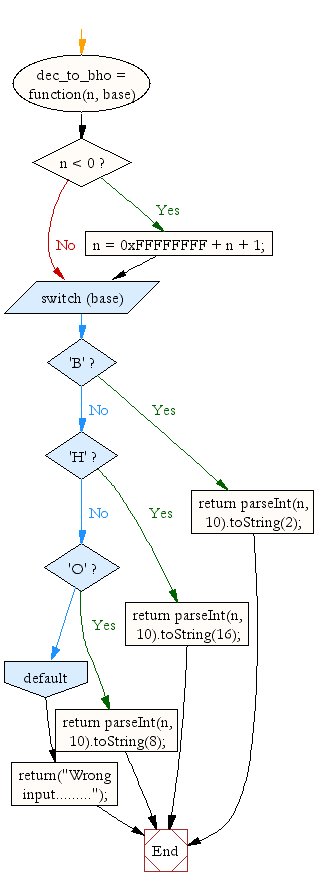

- #Integer to binary converter javascript how to
- #Integer to binary converter javascript code
- #Integer to binary converter javascript plus
Your next assumption may be that JavaScript can't do math. In C, C#, and other similarly situated languages, the result of 0.1 + 0. Figure 1 shows a simple math problem.įigure 1: JSFiddle output illustrating that. To begin to answer that question, let's see JavaScript in action with a simple task, adding two values and testing for equality. The next question to address is WHY this is the case. Your second assumption may be that JavaScript handles mathematical operations just like your primary language. Your first assumption is probably that JavaScript has an integer type. If you're a developer in a place where JavaScript is not the primary language and you're tasked with something that requires JavaScript, whether on the client or server, you may have some already baked assumptions based on your primary experience with C, C#, VB, Ruby, Python, etc. JavaScript's only native numeric type is the double-precision (floating point) 64-bit type.
#Integer to binary converter javascript how to
In this edition's column, I take you through some of JavaScript's mathematical idiosyncrasies and how to work around them. Later in this column, I'll illustrate how C# and JavaScript, as far as floating-point numbers are concerned, behave in the same way. JavaScript often gets bashed because “It can't perform math correctly.” If these same criteria were to be applied to C#, you'd reach the same conclusion. In fact, for the programming world at large, this isn't a new issue. For the JavaScript world at large, this isn't a new issue. If you’d like to learn more about JavaScript, check out our JavaScript topic page for exercises and programming projects.Depending on what mathematical requirements your application has, you may have to take special care to ensure that your operations return what you expect with respect to floating point (double) precision. Note: Can I Use documents the known issue for handling UTF-8 and provides a polyfill for older browsers. In this article, you were introduced to btoa and atob to encode and decode Base64 strings. Encoding a string to Base64 typically results in 33% longer output. Understanding the Limitations of Base64īase64 is in no way meant to be a secure encryption method.īase64 is also not a compression method.
#Integer to binary converter javascript plus
However, due to how certain servers may interpret plus ( +) and forward-slash ( /) characters, it is recommended to use encodeURIComponent instead. It is possible to use Base64 to convert input, like form data or JSON, to a string with a reduced character set that is URL-safe. For example, you can embed an image inline in a CSS or JavaScript file using Base64. You can also use Base64 to represent binary data in a way that is compatible with HTML, JavaScript, and CSS. Now, you have two tools for encoding and decoding Base64.
#Integer to binary converter javascript code
The output of this code is a string of characters with letters and numbers: Var encodedStringBtoA = btoa(decodedStringBtoA) In your browser’s web developer console, define the string, encode it, and display the encoded string: // Define the string Let’s say you have a string, "Hello World!", and wish to encode it to Base64. However, “ both the input and output of these functions are Unicode strings”.ītoa() takes a string and encodes it to Base64. Note: The naming of these functions reference old Unix commands for converting binary to ASCII (btoa) and ASCII to binary (atob). You can consult How To Use the JavaScript Developer Console to learn more.Įncoding and Decoding Strings with Base64ītoa() and atob() are two Base64 helper functions that are a core part of the HTML specification and available in all modern browsers.


You can consult How To Work with Strings in JavaScript to learn more. An understanding of strings in JavaScript.To follow along with this article, you will need: In this article, you will be introduced to the btoa and atob JavaScript functions that are available in modern web browsers. In JavaScript, it is possible to use Base64 to encode and decode strings.


 0 kommentar(er)
0 kommentar(er)
